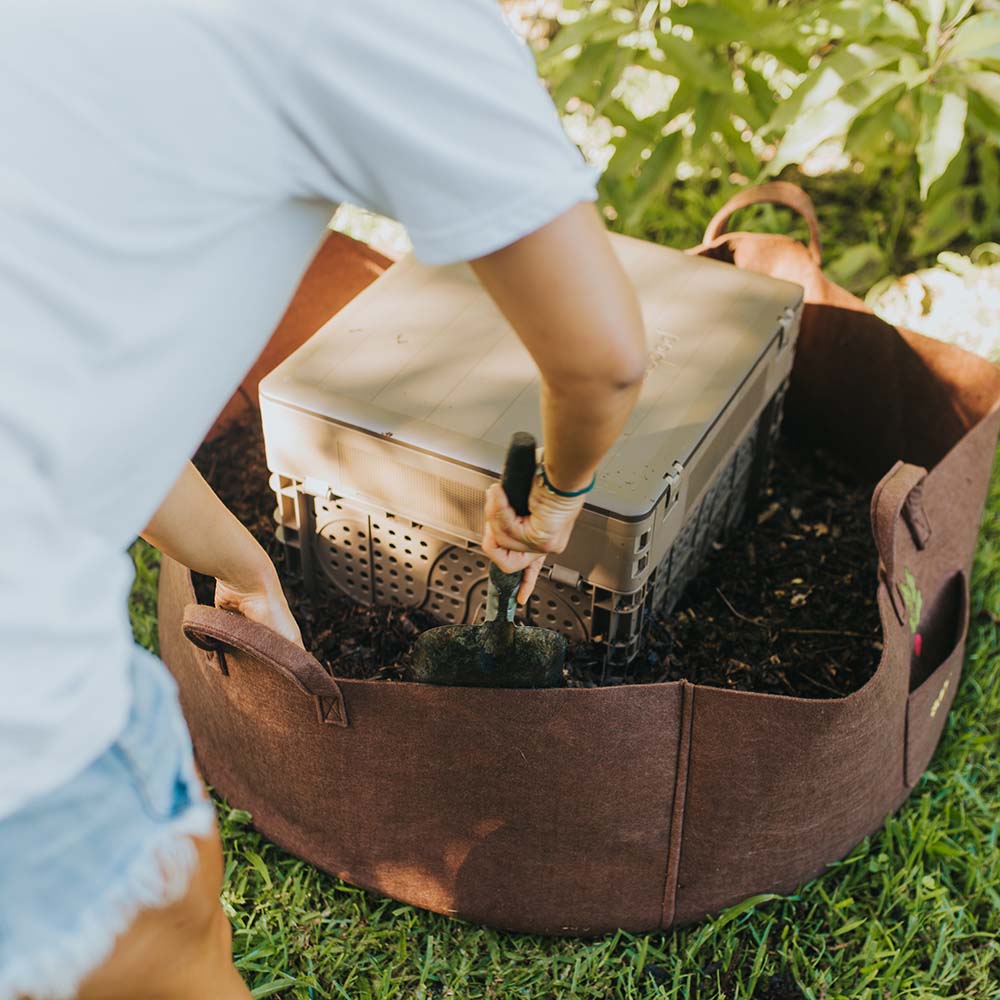Illustrations by the talented @jenna_jonsson
Let's talk companion planting. Companion planting has been in practice for hundreds, if not thousands of years. To understand why it's so useful, let's talk a little about what it is.
You might have heard of the term 'monoculture' or 'monocrop' before. These terms describe the act of growing only one variety of vegetable in a garden bed, field or even a whole farm. You know those fields of corn, cane or wheat you drive past? That's a monocrop field.
Companion planting, however, is the act of planting two or more plants close together – and not just that, but choosing the plants by how they benefit eachother.
Some plants protect other plants from pests, while others will provide shade for a plant that doesn’t like much sun or help them pollinate.
Have you heard of the three sisters' method of growing corn, squash and beans? That’s companion planting at its finest. There are so many ways to companion plant, and this blog will help you get started.
Why is companion planting important?
In a forest, there’s a diversity of plants that all work together within the ecosystem so it can thrive. That's what you want to recreate in your own garden!
Bringing together companion plants can form a healthy ecosystem, which will save you a lot of work in the garden. Rather than having to pick off pests, spray repellants and manually pollinate your wilting squash, nature will do the work for you.
Plants have formed special symbiotic relationships with one another over millions of years, and understanding these relationships can help you create an ecosystem that manages pests and produces nutrient rich vegetables. So, how do you do it?
Step 1: Build a relationship with your plant
Think about your plant as a friend you’re trying to get to know. It’s important to understand their likes and dislikes so you can get along, and make the most of your friendship.
Here’s a few questions you'll probably want to find out about your plant:
- What’s their origin?
- What conditions does it thrive in?
- What pests is it susceptible to?
By understanding your plants' likes and dislikes, you can get an idea of a companion plant, or ‘plant pal’, that will complement them!
Step 2 : Pick a pal for your plant
Now that you understand your plant, it’s time to pick its pal! We suggest picking a plant from a different family/species, that way you’ll maintain diversity in your patch. Diversity in your garden can help prevent diseases in your soil, and attracts beneficial insects and pollinators.
Looking at the problems your plant commonly has, try to find another plant that eases them. If your plant has a common pest, another might deter them.
Step 3 : Observe and learn from the process
Sometimes your plant pal experiment won't go to plan, but that’s the beauty of nature. It’s constantly changing, and it’s unique to your backyard. Sometimes you need more plant pals to control the problem, or there aren't enough beneficial insects in your area.
Whatever the reason, the more you observe and adjust according to the things you notice, the more you’ll learn and grow from the experience. Remain curious and share your experiences with your community, so we can all grow and learn from it!
Let's put it to the test!
Using the example of broccoli and dill, let's walk through the steps between identifying your plants weaknesses, and finding a suitable companion plant that will ease them.
Step 1: Build a relationship
Broccoli “Brassicaceae” is a descendant of kale, which is native to the western coast of Europe. This gives you a little clue for the conditions broccoli loves! Depending on the variety, broccoli prefers cool climates similar to the western coast of Europe.
As for issues Broccoli can have, they’re highly susceptible to cabbage moths, aphids and hornworms (in the U.S).
Step 2 : Find the perfect pal
Now that you know the pests of a broccoli are cabbage moths, hornworms and aphids, you'll need to attract predators to take care of them, such as ladybugs, praying mantises, and wasps.
Coriander, Carrots and Dill, which are all a part of the umbellifer family, are known for attracting these insects when they flower. Many of these beneficial insects drink the nectar of umbellifer flowers, and provide a habitat for offspring.
By planting umbellifer varieties near your broccoli, the insects they attract will feed on your broccoli’s natural pests, giving it a better chance of survival! Not to mention, you’ll get some dill-icious extra vegetables you might not have thought to plant.
Step 3 : Observe and learn from the process
Even if you do your best research, things still might not go to plan. The variety of carrot you choose could end up competing with your broccoli for nutrients, so both end up growing a little stunted.
It’s nothing to panic about, and it will all contribute to the pool of knowledge you’ll rely on as you get more experienced. There’s always a solution, even if it’s just starting over and using what you’ve learnt.
Need to update your garden gear?
Check out our easy to use compost systems & sturdy garden tools!







Leave a comment
This site is protected by reCAPTCHA and the Google Privacy Policy and Terms of Service apply.